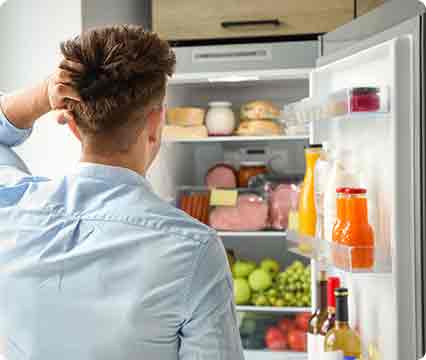Situational cues and momentary food environment predict everyday eating behavior in adults with overweight and obesity
This 2017 study analyzed how the surrounding food environments and cues may predict the daily dietary behaviors of overweight and obese adults. Many studies have implied previously that the food environment influences eating behaviors. Also, individual dietary behavior, which is believed to be a risk factor for obesity, depends on internal and external cues. Over 14 days, this study used ecological momentary assessment (EMA) to assess the behaviors of the 51 overweight/obese adults. The participants’ meal and snack consumption were examined randomly and multiple times daily, simultaneously with cues and momentary food environment. The cues related to increased likelihood of eating were both internal (affect) and external (food availability, social situation, observing others eat). The surrounding food environment at the time of eating were found to predict meals and snacking: overweight and obese individuals were more likely to eat high-energy snacks when fast food restaurants were close by, and low-energy snacks while supermarkets were within proximity. Elliston et al. conclude that real-time food intake behavior is associated with internal and external cues in overweight and obese adults. Also, how the individual perceives the surrounding food environment influences food choice. [NPID: food cues, obese, obesity, affect, food availability, social situation, snacking, internal cues, external cues, perception]
Year: 2017
 Navigation
Navigation






